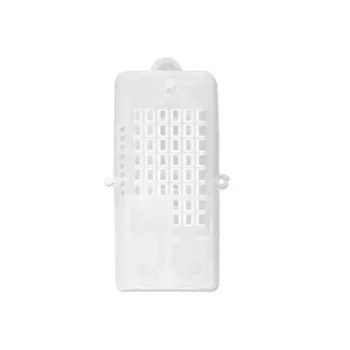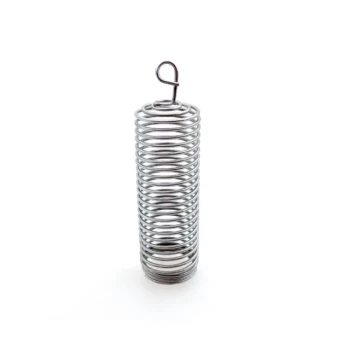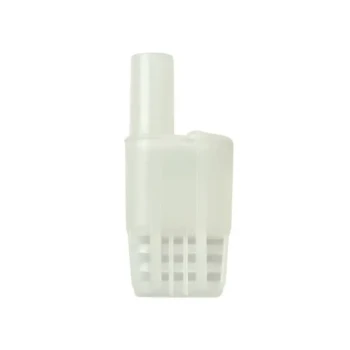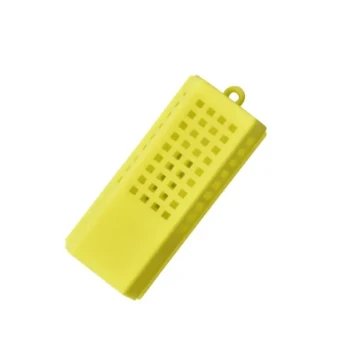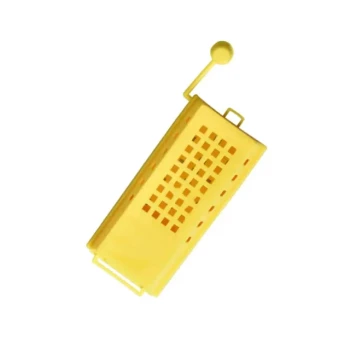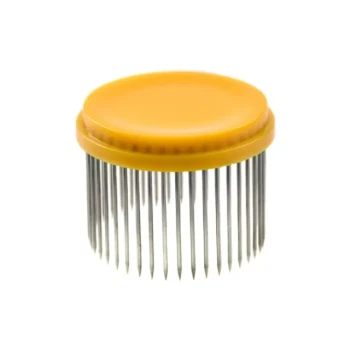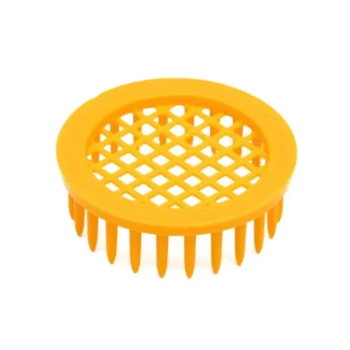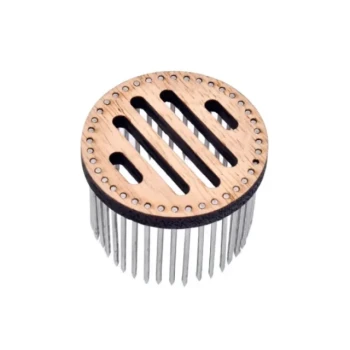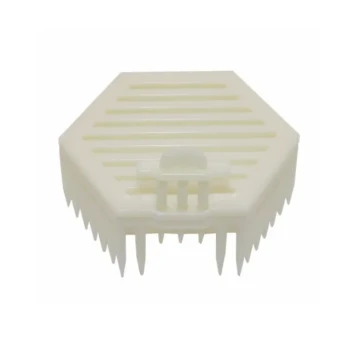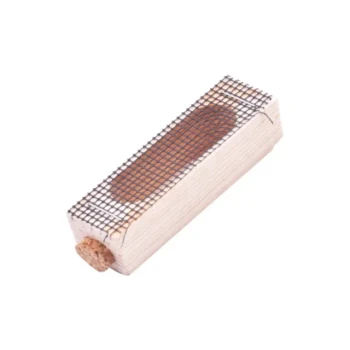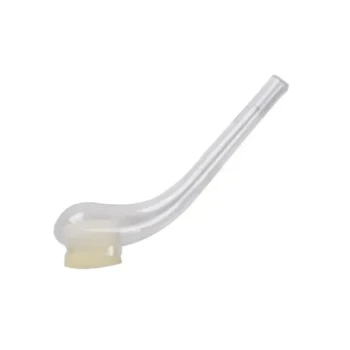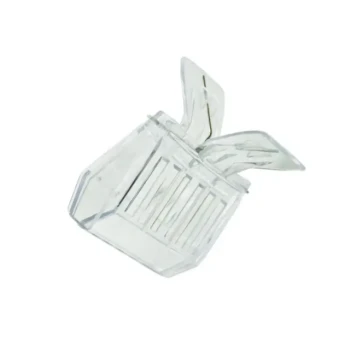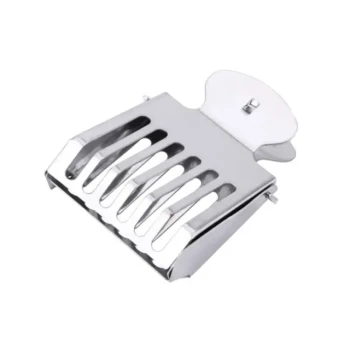To gently release a queen bee, you should offer her cage to a gap between the top bars of the frames. Rest the open cage on the frames and allow her to walk calmly into the hive on her own. This final, physical act of release should only happen after you have ensured the colony is ready to accept her.
The physical act of releasing the queen is the final step in a much more critical process: queen introduction. True success depends not on how you open the cage, but on ensuring the colony has already accepted her before she is fully free.
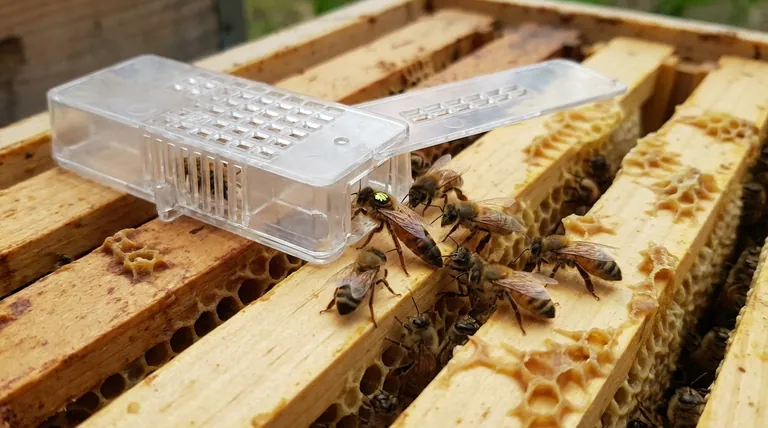
Preparing the Hive for Acceptance
Before you even think about releasing the queen, the hive must be in a receptive state. A stressed or unprepared colony is far more likely to reject a new queen.
Step 1: Confirm the Colony is Queenless
A colony will never accept a new queen if they already have one or believe they do. You must be certain the hive is queenless, meaning there is no laying queen and no queen cells that the bees are raising to create their own.
Step 2: Assess Hive Health and Resources
A new queen needs a strong foundation to begin her work. Inspect the hive for any signs of pests or diseases and ensure there are adequate food stores (honey and pollen) and a water source nearby. A healthy, well-provisioned hive is a calm hive.
The Two Methods of Queen Introduction
There are two primary strategies for releasing a queen. The one you choose depends on how much risk you are willing to take and how you gauge the colony's mood.
Indirect Release: The Safest Approach
This is the standard and most recommended method, especially for beginners. The queen cage typically has a "candy plug" blocking one exit.
You place the entire cage, candy-side accessible, between two frames in the brood box. The worker bees will then spend the next several days eating through the candy to release her. This slow process allows the queen's pheromones to spread throughout the hive, promoting gradual acceptance.
Direct Release: The Faster, Riskier Approach
This is the "gentle release" you asked about. It involves manually opening the cage and letting the queen walk directly onto the frames.
You should only perform a direct release after you have used the indirect method to confirm acceptance. For example, if you see the bees have nearly eaten through the candy plug and are gently tending to the queen through the cage, a direct release can speed things up.
How to Confirm Queen Acceptance
Before any direct release, you must look for clear signals from the worker bees. Rushing this step is the most common cause of failure.
Observe the Worker Bees' Behavior
Look closely at the bees on the queen cage. If they are gently touching her with their antennae and trying to feed her, this is a sign of acceptance.
If they are biting and grabbing at the cage or trying to sting her, this is aggressive rejection known as "balling." Do not release the queen if you see this behavior.
Check the Candy Plug
If you opted for an indirect release, the status of the candy plug is your best indicator. If the bees have diligently eaten through it, they have chosen to release her themselves, which is the strongest possible sign of acceptance.
Understanding the Trade-offs
Choosing a release method involves balancing speed against safety. Misjudging the colony's readiness can have dire consequences.
The High Cost of a Rushed Release
Directly releasing a queen into a colony that has not yet accepted her will almost certainly result in her death. The workers will quickly surround her in a tight ball, overheating and killing her within minutes.
Why an Indirect Release Might Fail
If the bees are not eating the candy plug after several days, it is a clear signal of a problem. This often means they have a hidden queen you missed or have started emergency queen cells elsewhere in the hive. You must find and resolve this issue before trying again.
The Danger of Over-Inspection
Once the queen is introduced (either in her cage or fully released), leave the hive alone for 5-7 days. Constantly opening the hive to check on her can stress the colony and disrupt the delicate acceptance process, potentially causing the bees to turn on her.
Making the Right Choice for Your Goal
Your decision should be guided by your experience level and your primary objective for the hive.
- If your primary focus is safety and the highest chance of success: Always use the indirect release method with the candy plug and let the bees release the queen on their own schedule.
- If your primary focus is speed and you are an experienced beekeeper: You can perform a direct release, but only after confirming absolute acceptance by observing the bees' behavior toward the caged queen over a few days.
Ultimately, successful queen introduction is an exercise in patience and careful observation.
Summary Table:
| Step | Key Action | Purpose |
|---|---|---|
| 1. Preparation | Confirm the hive is queenless and healthy. | Creates a receptive environment for the new queen. |
| 2. Introduction Method | Choose between Indirect (safer) or Direct (riskier) release. | Allows for gradual pheromone exchange and acceptance. |
| 3. Confirm Acceptance | Observe bees gently tending to the caged queen, not attacking. | The critical signal that it is safe to proceed with release. |
| 4. Final Release | Place open cage between frames, letting queen walk out calmly. | Completes the introduction process with minimal stress. |
Ensure your queen introductions are successful every time with reliable equipment from HONESTBEE.
We supply commercial apiaries and beekeeping equipment distributors with high-quality, wholesale-focused supplies designed for professional results. From durable queen cages to essential hive tools, our products support the careful processes that lead to strong, productive colonies.
Let's discuss your apiary's needs. Contact our wholesale team today to get the right equipment for your operation.
Visual Guide
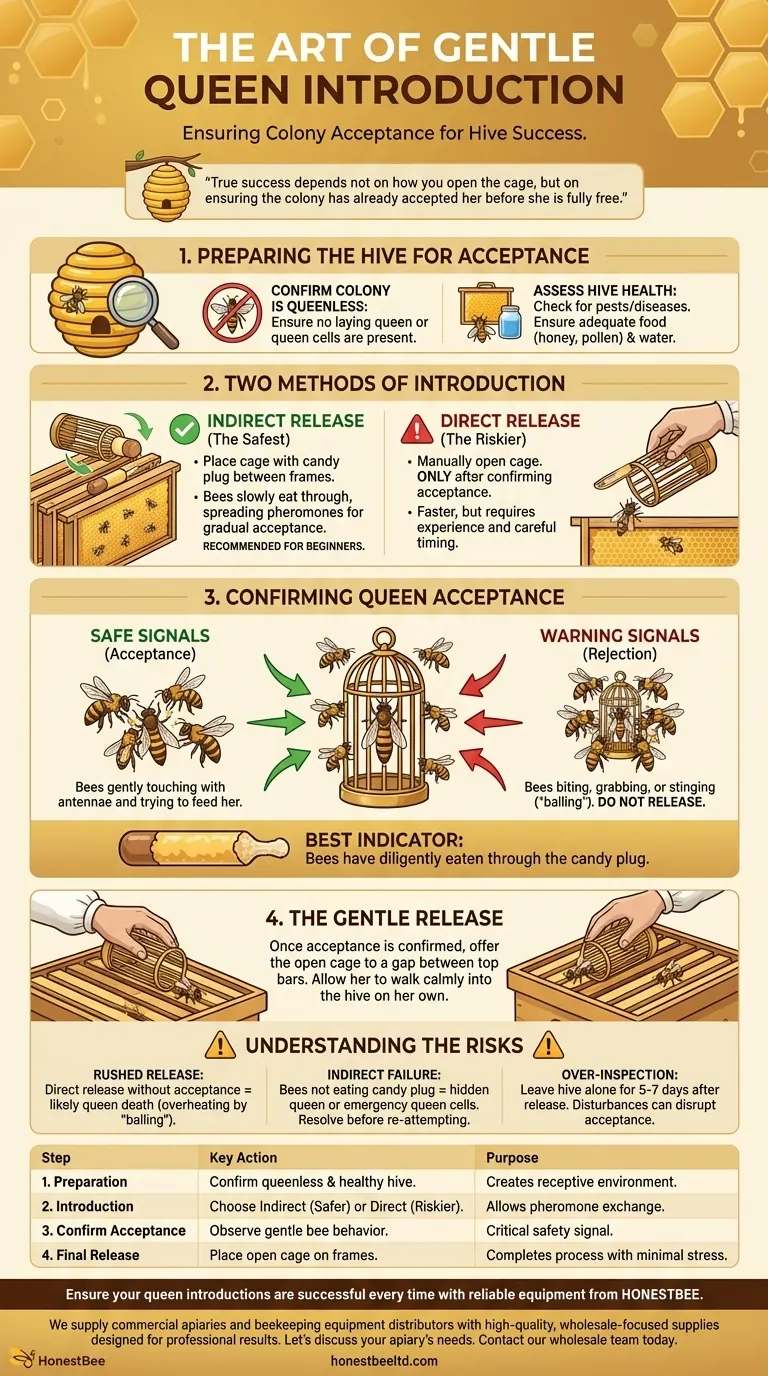
Related Products
- Professional Multi-Functional Queen Bee Cage
- Durable Galvanized Steel Spring Queen Bee Cage
- Multi-Function Queen Roller Cage and Catcher
- Professional Multi-Compartment Queen Cage with Sliding Lid
- Professional Queen Cage with Sliding Gate and Feeder Plug
People Also Ask
- How long does it typically take bees to adjust to a new queen? Master the 2-7 Day Acceptance Window
- How should a queen cage be maintained over time? Ensure Queen Introduction Success
- What are the components of a standard queen cage? A Guide to Safe Queen Introduction
- What is sequestration, and how does it help bees reorient? A Safer Guide to Hive Relocation
- How do you check if the queen has been released after installation? A Guide to Successful Queen Acceptance
